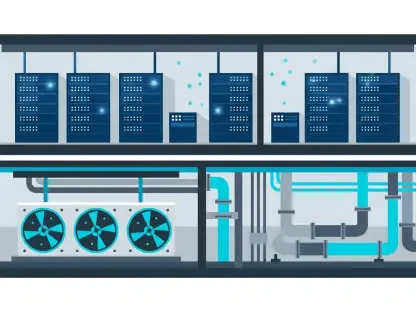The telecommunications industry is undergoing a significant transformation, prompted by innovations like 5G, IoT, and AI. Central to this transformation are real-time billing systems, which are enabling telecom operators to implement dynamic pricing models, cater to diverse customer needs, and respond swiftly to market changes. This article explores how real-time billing systems are reshaping telecom services, enhancing customer experiences, and providing strategic advantages for operators.
Transformation of Billing Systems
Necessity for Enhanced Connectivity
The need for faster and more reliable connectivity has driven telecom operators to rethink their traditional billing systems. Previously, billing was a static, post-usage process that often led to inaccuracies and customer complaints. Real-time billing systems, on the other hand, provide immediate visibility into usage and charges, dramatically improving the customer experience.
The traditional billing models were not equipped to handle the dynamic nature of modern telecommunications services. With the rise of 5G and IoT, telecom services have become highly variable. Real-time systems can adapt to these rapid changes, allowing operators to stay ahead in a fast-paced market.
The transformation from static to real-time billing signifies more than just a technological upgrade; it marks a shift in how telecom services are managed and delivered. Real-time systems offer telecom operators the agility needed to meet the ever-evolving demands of their users. Enhanced connectivity ensures minimal latency and high reliability, which are crucial for applications like autonomous driving and remote surgeries. Furthermore, the ability to provide instant feedback on usage and charges eliminates the billing surprises that have historically plagued the industry.
Evolution into Dynamic Pricing Models
Dynamic pricing models are increasingly becoming a necessity in the telecom industry. Real-time billing systems enable operators to implement these models efficiently. Dynamic pricing allows for variable rates based on factors like time of day, network congestion, and customer usage patterns. This provides a more personalized experience for users and helps operators maximize their revenue streams.
Telecom operators are also able to create more innovative service packages, such as bundled offers or pay-per-use plans. These offerings can be adjusted in real-time to reflect current market conditions, providing both flexibility and competitiveness. The ability to adapt pricing swiftly to market conditions offers a significant competitive edge and introduces an element of flexibility that was previously unattainable.
Dynamic pricing driven by real-time billing is not just advantageous for operators but also for consumers, who benefit from tailored service packages that meet their specific needs. Imagine a scenario where a user can opt for lower rates during non-peak hours or receive instant discounts for offloading data usage during times of high network congestion. These models provide a win-win situation: consumers enjoy cost savings while operators optimize network resources and boost revenue. Additionally, innovative packages like family plans, prepaid services, and special data bundles can be rolled out more effectively in a real-time billing environment, making telecom services more appealing to a diverse customer base.
Real-Time Billing and Its Benefits
Increased Transparency and Reduced Disputes
Real-time billing systems offer unparalleled transparency, which significantly reduces billing disputes and errors. Customers can monitor their usage and costs in real-time, providing a clear understanding of their telecom expenses. This level of transparency fosters trust and enhances customer satisfaction.
Furthermore, real-time billing information enables flexible payment options. Customers can choose from a variety of payment methods and schedules, reducing the likelihood of missed payments and subsequent service interruptions. This flexibility is particularly beneficial in markets with diverse consumer bases. The transparency provided by real-time billing allows users to make informed decisions about their consumption, thereby reducing financial surprises and fostering a sense of control over their telecom expenses.
Reduced disputes also mean fewer calls to customer service centers, freeing up resources for telecom operators to focus on enhancing service quality. When customers can verify their usage and charges in real-time, the need for lengthy dispute resolution processes diminishes significantly. The comprehensive, instantaneous visibility offered by real-time systems not only improves customer trust but also enhances the operational efficiency of telecom operators.
Integration with Online Charging Systems
Integration with Online Charging Systems (OCS) is a critical component of efficient real-time billing. OCS allows for immediate charging and billing of services as they are used, enabling telecom operators to manage their resources more effectively. This integration also supports the implementation of converged charging, where multiple services are billed on a single platform.
Converged charging simplifies the billing process for both operators and customers. It consolidates charges for various services, such as voice, data, and SMS, into a single bill, making it easier to manage and understand. This comprehensive approach enhances the overall customer experience. The capability to handle multiple services on a single bill minimizes the complexities traditionally associated with telecom billing and offers a seamless, user-friendly approach to service consumption.
Moreover, an integrated OCS can facilitate real-time discounts, promotional offers, and loyalty programs, creating opportunities for operators to upsell and cross-sell additional services. For instance, a user might receive a real-time notification offering a discount on additional data if their usage exceeds their current plan limits. Such proactive engagement not only enhances customer satisfaction but also opens new revenue streams for telecom operators. The ability to provide instant updates and flexible payment options through integrated systems further strengthens the bond between operators and their customers.
Regulatory Compliance
Data Protection and Tax Regulations
Real-time billing systems play a crucial role in ensuring regulatory compliance, particularly concerning data protection and taxation. These systems are designed to adhere to strict regulatory requirements, minimizing the risks associated with non-compliance. Telecom operators can thus operate with greater confidence, knowing that their billing practices meet all necessary regulations.
Compliance with data protection regulations is especially important in the era of GDPR and similar laws. Real-time systems ensure that customer data is handled securely and transparently, which helps in building customer trust and loyalty. Additionally, accurate real-time billing facilitates precise tax calculations and reporting, reducing the risk of financial penalties.
Regulatory compliance is a significant consideration for any telecom operator, given the global reach and varying legal frameworks in different countries. Real-time billing systems provide the necessary tools to navigate this complex landscape effectively, thereby ensuring operations run smoothly and within legal boundaries.
Supporting Diverse Use Cases
The versatility of real-time billing systems extends to supporting a wide range of use cases, from smart cities to autonomous vehicles. These applications require low-latency, high-reliability connectivity, which can only be effectively monetized through real-time billing. Operators can offer specialized pricing models for different use cases, ensuring optimal revenue generation.
For instance, in smart city applications, real-time data can be used to manage resources like electricity and water more efficiently. Telecom operators can charge based on actual usage in real-time, providing a fair and transparent billing method. This adaptability is essential for supporting the diverse range of services enabled by modern technologies. The use of real-time billing in these scenarios offers precise, usage-based pricing models, which can be instantly adapted to reflect real-world conditions and changes.
In the context of autonomous vehicles, real-time billing ensures that connectivity services are billed accurately, reflecting the high bandwidth and low-latency requirements of such applications. The ability to charge dynamically based on parameters like distance-driven or data consumed allows telecom operators to capture the full revenue potential of these emerging technologies. Real-time billing also facilitates seamless integration with other infrastructural systems, optimizing overall functionality and service delivery.
Monetizing Emerging Technologies
Leveraging 5G and IoT
The advent of 5G and IoT has opened up new revenue streams for telecom operators. Real-time billing systems make it possible to monetize these technologies effectively. With 5G, operators can offer ultra-low latency services, such as virtual reality and autonomous driving, that require immediate billing and charging capabilities.
IoT devices, which are expected to grow exponentially in number, also benefit from real-time billing. These devices often have varying data usage patterns, and a real-time billing system can accommodate these fluctuations. This ensures that operators can effectively manage and monetize the massive amounts of data generated by IoT devices.
Individualized billing and usage-based pricing are particularly beneficial for IoT applications, where hundreds or thousands of devices may be connected simultaneously. Real-time billing systems ensure precise tracking and charging of data, allowing operators to implement pay-per-use models or subscription plans tailored to specific IoT applications. This level of granularity in billing not only maximizes revenue but also provides valuable insights into usage patterns, helping operators fine-tune their services and optimize their networks.
Adapting to eSIM Technology
The telecommunications industry is undergoing a major transformation driven by groundbreaking technologies such as 5G, the Internet of Things (IoT), and artificial intelligence (AI). At the heart of this evolution are real-time billing systems. These advanced systems empower telecom operators to adopt dynamic pricing models that can adjust on the fly, meeting diverse customer demands and enabling rapid response to shifting market conditions.
Real-time billing systems have become pivotal in reshaping telecom services. They enable operators to track usage and adjust charges instantaneously, offering a more tailored and efficient customer experience. This capability not only improves customer satisfaction but also provides a significant strategic edge. Operators can better predict trends, manage resources, and optimize revenues.
Additionally, real-time billing systems facilitate innovative services like personalized data plans and flexible payment options, making telecom services more adaptable and appealing to a broader audience. As these technologies continue to evolve, their impact on the telecom industry will likely grow, creating even more opportunities for enhanced customer engagement and operator profitability.









